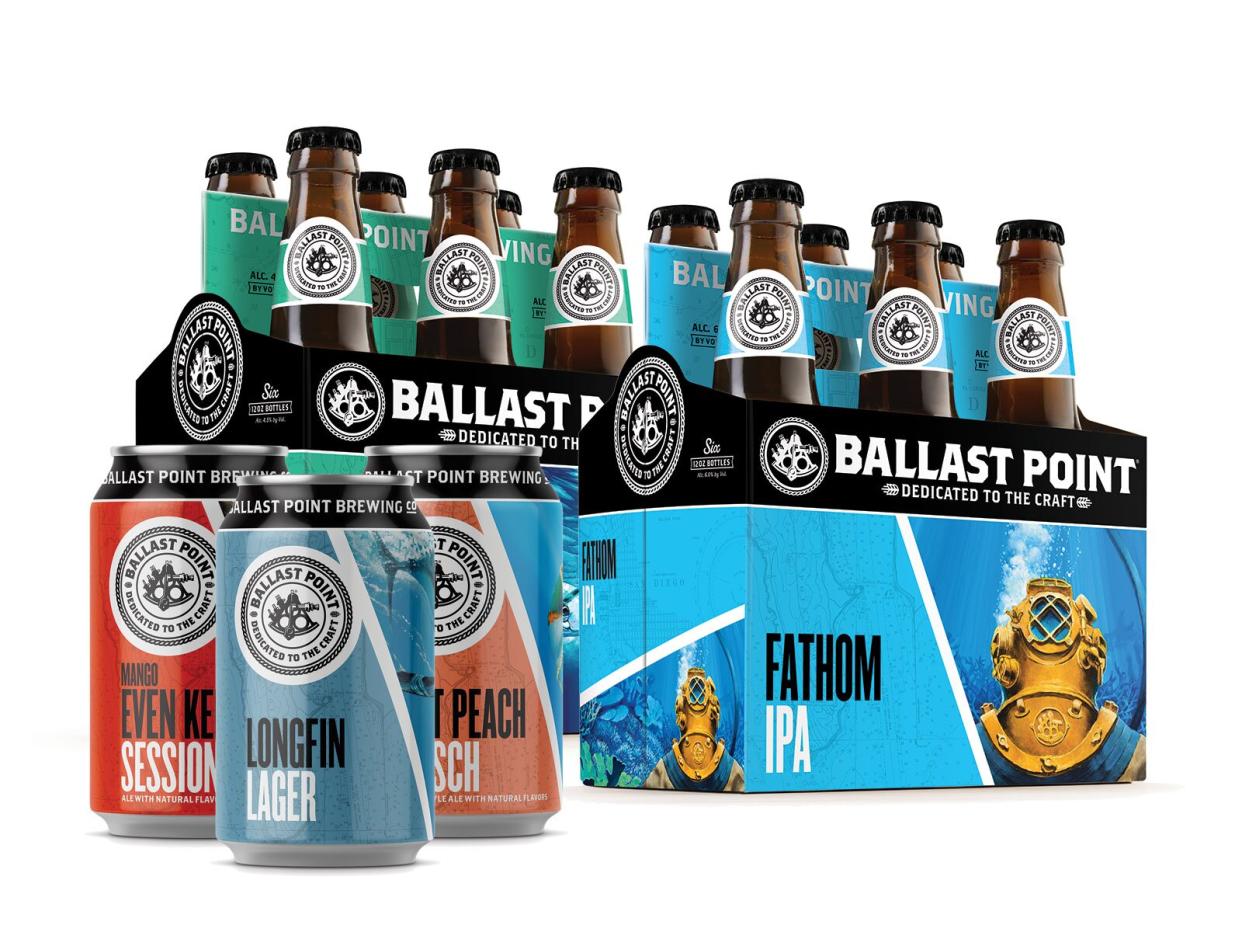Ballast Point Is Getting a Makeover and Dropping Prices

Courtesy of Ballast Point Brewing Co.
Back in May, when I wrote an article about what happens when a craft brewer sells out, I started with the example of San Diego's Ballast Point. The brewery is an interesting example if only for the figures involved. In 1996, Jack White launched Ballast Point out of the back of his homebrew shop; in 2015, the company sold to Constellation Brands, best known in the beer world as the owner of Corona, for $1 billion. Even those who question the ethics of selling out might be convinced otherwise with a ten figure check.
But Ballast Point is also becoming a good example of what can happen after a brewery sells out. Jack White has left the brand, and overall, the team running Ballast Point today looks much different than the one before the sale. Soon, the beers themselves are going to look much different, too.
Constellation Brands is planning to re-launch many of Ballast Points best-known beers in an effort to "tell its story more effectively." The revelation comes from a discussion Jim Sabia, Constellation's chief marketing officer, and Marty Birkel, the president of the organization's craft and specialty division, had with the beer news site Brewbound.
Since acquiring Ballast Point, Constellation has taken a very research-driven approach to the brewer, and the results have been interesting. "We have done a lot of market structure work, to understand what a consumer thinks about when buying beer," Sabia said. What they found is that 58 percent of craft drinkers want beers that are between 4 and 6 percent ABV. They also found that only a third of those drinkers were familiar with the Ballast Point name.
Constellation's response will probably feel pretty obvious: It's planning to rebrand many of the brewery's beers that fall into the 4 to 6 percent ABV category with flashy new packaging aimed at attracting new customers. The price of these beers will also be lowered to between $9.99 and $10.99 per six-pack, a price point that Constellation says attracts growth.
So much of consumer reaction to a brewery selling out is emotional, but what happens afterward can actually be extremely dry and calculated. And notice how nothing is said about the beers themselves: In theory, the beer stays the same; it's the approach to selling the beer that becomes more corporate. "[The IPA category] is a vibrant category, and by having a more approachable brand, we can get new consumers into the franchise," Sabia told Brewbound—spoken exactly like someone who paid $1 billion for a beer brand.

